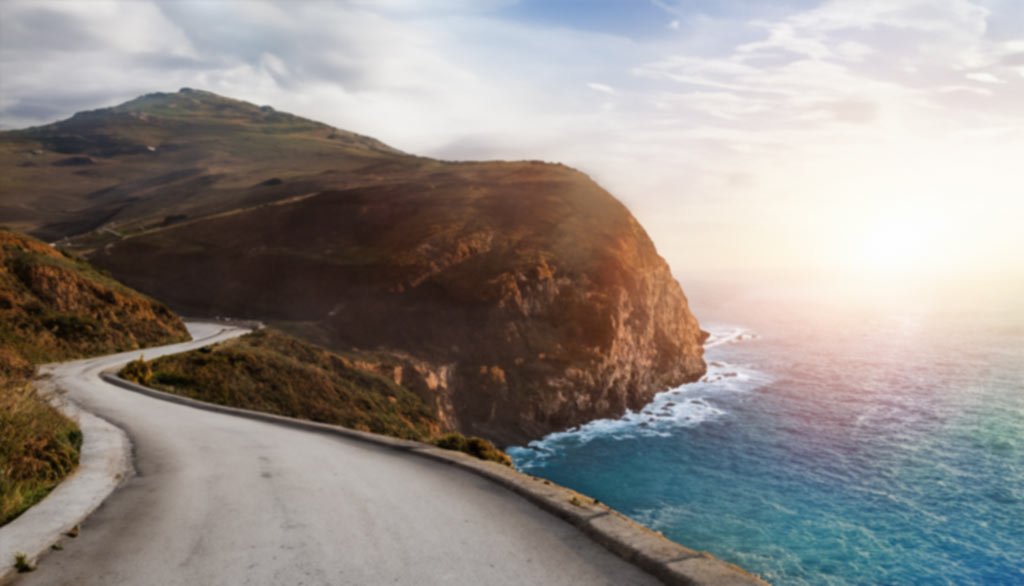A significant highlight of Heraklion is its rich collection of museums, each telling a unique story of the region’s vibrant history. The Heraklion Archaeological Museum is among the city’s most popular institutions, offering visitors an in-depth look at Crete’s Minoan civilisation through its extensive artefact collection, which spans from the Neolithic period to Roman times.
The Historical Museum of Crete provides insights into the art and history of the island from early Christian times through the modern era. Visitors can delve deep into the area’s culture and traditions, with the museum presenting an array of objects, including Byzantine art, sculptures, and folk artefacts. The Natural History Museum of Crete offers a change of pace, focusing on the diverse flora and fauna of the Eastern Mediterranean region. Housed in a former power plant, it provides an interactive and educational experience, celebrating the island’s rich biodiversity and geological significance. With such a wide variety of museums, Heraklion ensures that every visitor can find something that resonates with their interests.
Listed below are the best Museums in Heraklion:
- Heraklion Archaeological Museum: Heraklion Archaeological Museum is arguably the most significant in representing Crete’s Minoan civilisation. Housing artefacts spanning over 5,000 years, it offer visitors a comprehensive understanding of the island’s prehistoric culture. Its collection includes popular pieces from Knossos, Phaistos, and other archaeological sites. Key exhibits include the Phaistos Disc and the Snake Goddess figurines. Its central location in Heraklion makes it easily accessible for tourists.
- Historical Museum of Crete: The Historical Museum of Crete provides a detailed narrative of Crete’s history from early Christian times to the modern era. Highlights include two El Greco paintings, Byzantine art, and displays capturing the Venetian and Ottoman periods. Its well-curated exhibitions offer insights into the evolution of Cretan art, culture, and everyday life. The Historical Museum of Crete also organises educational programs and temporary exhibitions, enhancing the visitor experience.
- Natural History Museum of Crete: The Natural History Museum of Crete offers a blend of education and entertainment. Interactive displays highlight the region’s flora, fauna, and geological formations. The earthquake simulator is a unique feature, giving visitors a feel of the island’s seismic activity. Natural History Museum of Crete’s layout is designed to be family-friendly, making it an excellent choice for visitors with children.
- “Kostas Kotsanas” Museum of Ancient Greek Technology: “Kostas Kotsanas” Museum of Ancient Greek Technology offers a fascinating glimpse into the technological advancements of ancient Greece. Exhibits showcase the ingenuity of ancient inventors and the foundations of many modern-day technologies. With interactive displays, visitors can engage with inventions like the analogue computer and automated theatre.
1. Heraklion Archaeological Museum
The Heraklion Archaeological Museum began its journey in 1883, starting as a basic collection of antiquities during the resurgence of interest in the Minoan civilisation, which coincided with Crete’s semi-autonomous status within the Ottoman Empire. Initially vulnerable to earthquakes and wartime damage, Heraklion Archaeological Museum was rebuilt in 1935 by architect Patroklos Karantinos, standing strong even through World War II. It has since grown into one of Greece’s and Europe’s most significant museums, housing a comprehensive collection spanning over 5,500 years, from the Neolithic era to Roman times. Its exceptional Minoan artefacts make it a global hub for Minoan culture, while its modernist architecture, designed for both preservation and visitor experience, continues to draw lovers and scholars alike.
The Heraklion Archaeological Museum, built on the site of a former monastery, remains a hallmark of modernist architecture with a Bauhaus commendation. It provides enough exhibition space, research facilities, and even a museum shop, making the visitor experience informative and accessible. While it underwent renovations from 2006 to 2013, it continues to fulfil its mission as a regional service of the Ministry of Culture, preserving, studying, and promoting Cretan artefacts from various historical periods. In addition to its permanent exhibits, the Heraklion Archaeological Museum hosts temporary displays and collaborates with scholarly institutions, serving as a cultural and educational hub.
2. Historical Museum of Crete
The Historical Museum of Crete, located in Heraklion, was established by the Society of Cretan Historical Studies in 1953. Initially set up in Minos Kalokairinos’ former residence, it later expanded with a contemporary wing. It offers a deep dive into Crete’s history and art from the 4th century AD to World War II. Visitors can explore a range of items like ceramics, sculptures, coins, jewellery, and wall paintings. Notably, it displays two paintings by the Cretan-born artist El Greco, which are the only ones found in Crete. The Historical Museum of Crete also showcases a detailed model of 17th-century Heraklion under Venetian influence and a dedicated collection of items related to the famous writer Nikos Kazantzakis. The Historical Museum of Crete frequently updates its temporary exhibition rooms besides its permanent exhibits. For instance, in the summer of 2012, it celebrated the life and achievements of poet Odysseas Elytis.

3. Natural History Museum of Crete
The Natural History Museum of Crete, operating under the University of Crete, is dedicated to studying, protecting, and promoting the Eastern Mediterranean region’s rich biodiversity and geological heritage. Housed in an industrial building that once served as a power plant, it actively engages in research and educational initiatives. Collaborating with the University of Crete and other institutions, its research areas encompass biodiversity, conservation, geology, and palaeontology, with a particular focus on the Mediterranean region. Moreover, the Natural History Museum of Crete plays a vital role in education by offering school programs and organising workshops, seminars, and public lectures related to the natural world. In recognition of its extensive work in research, education, and scientific promotion, it was honoured with the Benaki Award by the Academy of Athens in late 2012.
In 2023, on Earth Day (April 22), the Natural History Museum introduced the ‘Nature Overheard’ community science project, which explores the correlation between noise pollution and insect populations, inviting the public to participate by recording wildlife observations. By engaging the community, the Natural History Museum aims to collect valuable data to understand the natural world and its ecosystems better.
4. “Kostas Kotsanas” Museum of Ancient Greek Technology
The Kotsanas Museum of Ancient Greek Technology, located in Heraklion’s “Palazzo d’ Ittar” at 18 Epimenidou Street, offers an engaging exploration of the secrets of ancient Greek technology. It is designed to cater to visitors of all ages, both Greek and English-speaking. The “Ancient Greece – The Origins of Technologies” exhibition showcases approximately 75 unique objects, including remarkable inventions like the automatic servant (the world’s first robot), the automatic theatre of Philon, the hydraulic clock of Ktesibios, and the famous Antikythera Mechanism, which is considered the world’s first computer.
The Museum of Ancient Greek Technology employs modern display techniques and a team-oriented approach, providing audiovisual English and Greek materials and explanatory texts in multiple languages. Special workshops, conferences, and events on subjects like robotics and mathematics are regularly organised, making it a place where knowledge, culture, and entertainment converge. Additionally, it offers a snack bar and souvenir shop, allowing visitors to purchase handmade replicas of its most significant items.
For entrance, the Museum of Ancient Greek Technology offers several ticket options, including a general admission fee of €7, reduced tickets for eligible individuals at €5, and a family ticket pricing structure, making it accessible for diverse groups. Interactive tours are also available at €10 per person for a minimum of four participants, and online interactive tours at €5 for a minimum of eight participants.
5. Museum of the Battle of Crete and the National Resistance
The Museum of the Battle of Crete and the National Resistance is a municipal historical institution dedicated to preserving the memory of Crete’s defence during World War II and the local resistance efforts. Established by the Municipality of Heraklion in May 1994, its primary mission is to gather, conserve, and display artefacts and records from the period spanning 1941 to 1945 in a suitable manner. It serves as a repository of information on the people’s heroic struggle during the Battle of Crete and the subsequent German-Italian occupation, ensuring that this significant historical period is documented and disseminated for public awareness. In addition to its role as a keeper of material relics from the past, the Museum of the Battle of Crete and the National Resistance also seeks to pique interest and respect for Crete’s rich history, playing an essential part in preserving the island’s cultural heritage.

6. Christian Art Museum
Located within the 13th-century Monastery of St. Catherine of Sinai in Heraklion, the Museum of Christian Art uniquely attracts those interested in religious art. It has an impressive collection of religious artefacts sourced from Cretan monasteries, spanning from the second Byzantine era to the end of the Ottoman rule. Visitors to this site will encounter an array of captivating items, including wood sculptures, frescoes, manuscripts, and metalworks. The Christian Art Museum’s focal point is the works dedicated to Angelos Akotantos, a notable Cretan hagiographer from the 15th century. Operating from Monday to Saturday, visitors can explore this rich collection between 9 AM and 5 PM, with a standard ticket priced at €4.
7. Museum of Cretan Ethnology
The Museum of Cretan Ethnology in Voroi, southern Crete, Greece, was established in 1973 and officially inaugurated in 1988. It was designed by the French architect Georges Henri Rivière, known for his work at the Musée National des Arts et Traditions Populaires in Paris. It has been a significant research centre since 1980, focusing on the civilisations of Crete spanning from 1000 BC to the present day. Its collection encompasses artefacts from various historical periods, including the Minoan era, the Archaic period, Byzantine times, and the Turkish occupation. It offers a rich array of items related to agriculture, stock breeding, pottery, basketry, wood carving, architecture, music, and dance, showcasing the diverse aspects of Cretan culture and heritage.
The Museum of Cretan Ethnology was initially established by the Mesara Cultural Association and went through a planning phase from 1973 to 1981, leading to its construction between 1977 and 1981, sponsored by the Greek Ministry of Culture. Large-scale research and educational programs were carried out from 1982 to 1991, with support from the European Central Fund. It won the European Museum of the Year Award in 1992 from the Council of Europe and earned recognition as a National Charity in 1992. In 2001, a new complex was added for research and educational activities, with funding from the European Union and the Greek Ministry of Culture. While facing some financial challenges due to research and publication expenses, the Museum of Cretan Ethnology continues its operations as of 2010, relying on donors to sustain its vital work in preserving and presenting Cretan ethnology.
8. Lychnostatis Open Air Museum
The Lychnostatis Open Air Museum, located in Hersonissos, Crete, stands as a unique and captivating attraction, situated 24 kilometres away from Heraklion. Established as a private foundation in July 1992, it owes its existence to the visionary ophthalmologist Yiorgos Markakis. Mr. Markakis, alongside local craftsmen, initiated its construction in 1986, crafting it from wood and stone without the use of machinery, resulting in an authentic and exceptional site. Guests can explore meticulously reconstructed rooms and workshops, gaining insight into the daily life of the Cretan people. Tradition, folklore, and ethnological heritage are on full display, making it an ideal destination for those interested in Greek culture. Additionally, the Lychnostatis Open Air Museum provides an audio guide that offers in-depth explanations of each exhibit, and children are encouraged to touch the tools under the supervision of their family members.
The Lychnostatis Open Air Museum also hosts various activities, including traditional dance performances, theatre presentations, and wine and honey tasting. Following the tour, visitors can relax on the adjacent beach, offering a great view of the sea. It operates from Monday to Saturday, 9 AM to 2 PM, with Sunday as a non-operational day. The standard ticket price is €6, with an additional €2 for the audio guide. Remarkably, the entrance is free if deciding to visit the museum again, making it a rewarding and educational destination for multiple visits.
9. Nikos Kazantzakis Museum
The Nikos Kazantzakis Museum, situated in Myrtia village in Crete’s Heraklion regional unit, is dedicated to honouring the life and literary contributions of the popular writer Nikos Kazantzakis, a nine-time Nobel Prize in Literature candidate. Founded in 1983 by scenographer and costume designer George Anemogiannis, this museum found its place in Myrtia, Nikos Kazantzakis’ ancestral village. In 2009, it underwent a comprehensive renovation, offering a fresh and engaging exhibition of its collections.
The Nikos Kazantzakis Museum’s space artfully presents 650 exhibits with a modern aesthetic that underscores Kazantzakis’ philosophy’s timeless and universal nature. Visitors can learn into the author’s persona through his letters, diaries, personal items, travel mementoes, rare photographs, set and costume models, audiovisual materials, and artwork inspired by his literary world. The exhibition is organised into five thematic sections, covering aspects of Kazantzakis’ life and works. The Nikos Kazantzakis Museum also offers a multilingual documentary on Nikos Kazantzakis’ life and work and provides wireless audio tours in Greek, English, and German.
Beyond the permanent exhibition, the Nikos Kazantzakis Museum is actively engaged in various educational programs and activities for diverse audiences. It houses a research library, promotes educational initiatives for school groups, and organises events, conferences, workshops, and more. It also manages the N. Kazantzakis & G. Anemogiannis archives, an extensive and dynamic collection enriched with significant contributions, and features a museum shop offering a wide range of Kazantzakis-related items and publications.
10. El Greco Museum
The Museum of El Greco, also known as the El Greco Museum or Domenikos Theotokopoulos Museum, is situated in Fodele, Crete, west of Heraklion. It is dedicated to the celebrated mannerist painter El Greco, whose real name was Domenikos Theotokopoulos (1541–1614), and who spent his formative years in Fodele. The El Greco Museum, located approximately 1 km from Fodele’s centre, features copies of El Greco’s works and documents associated with the artist. Initially in a state of disrepair, it underwent restoration in 1982, which was generously funded by the Greek Ministry of Culture, and opened to the public in 1998. While Fodele claims to be the birthplace of El Greco, this assertion is subject to dispute. It should also be noted that the Historical Museum of Crete in Heraklion, not far from Fodele, houses the only original works by El Greco in Crete.
11. Koules Fortress
The Koules Fortress, also known as Castello a Mare, stands at the entrance to the historic harbour of Heraklion, Crete. It is a defensive structure initially built by the Republic of Venice in the early 16th century. Its primary purpose was to safeguard Heraklion and its residents from the threats of pirates and invading forces. The fortress has seen various historical phases, including Arab protection in the 9th and 10th centuries and Venetian reconstruction after a significant earthquake in 1303. By 1540, it was reinforced with 25 large guns on the roof and 18 cannons on the ground floor. Subsequently, it came under Ottoman rule in 1669. The Koules Fortress remains accessible to the public and now hosts cultural events.
The optimal time for visiting the Koules Fortress is during the summer months, from June to August. Crete experiences warm to hot weather during this period, with temperatures ranging from 20 to 30 degrees Celsius. Summer is the busiest season for tourists, attracting a higher number of visitors to the fortress. To avoid crowds, planning visits early in the morning or later in the day is advisable. The Mediterranean climate of Crete ensures dry and warm summers, making it an ideal time to explore this historical site.
Which are the most visited museums in Heraklion?
Listed below are the most visited museums in Heraklion:
- Heraklion Archaeological Museum: The Heraklion Archaeological Museum is situated on Xanthoudidou Street, right in the heart of Heraklion, Crete. It is conveniently located in the city centre, making it easily accessible by foot from any part of the city. Visitors can also reach the museum by public transport, taxis, or private cars. The standard ticket price is between €6 to €12. It is famous for its extensive collection of artefacts from the Minoan civilisation, offering a comprehensive overview of Cretan history.
- Historical Museum of Crete: The Historical Museum of Crete is located on Sofokli Venizelou Avenue, approximately 1 kilometre from the main city centre in Heraklion, Crete. Visitors can easily reach it on foot from the city or opt for public transport or taxis. The standard ticket price is €5. It is dedicated to showcasing the art and history of Crete from the 4th century AD to the Second World War and features two significant El Greco paintings.
- Natural History Museum of Crete: The Natural History Museum of Crete can be found near the Historical Museum on Sofokli Venizelou Avenue, around 1.5 kilometres from Heraklion’s city centre. Visitors can choose to walk to the museum or use public transport, taxis, or private cars to access the museum. The standard ticket price for adults is €8. It strongly emphasises the Eastern Mediterranean region’s diverse flora, fauna, and geological wonders, providing a unique and informative experience.
What do you need to know about Heraklion as a tourist?
Listed below are the things to know about Heraklion as a tourist:
- Historical Significance: Heraklion is rich in history, especially from the Minoan civilisation. Heraklion is home to the ancient ruins of Knossos Palace, believed to be Europe’s oldest city. As the island’s capital, Heraklion has witnessed the influence of various empires, from the Byzantines to the Venetians and the Ottomans. Understanding its historical context enriches the experience of exploring its streets, buildings, and museums.
- Strategic Location: Heraklion is located on the northern coast of Crete ans serves as the main gateway to the island. Heraklion hosts the island’s primary international airport and port, making it a central hub for tourists. Its position makes it an excellent starting point for excursions to other parts of Crete and the neighbouring islands.
- Local Cuisine: Cretan cuisine, a subset of the Mediterranean diet, is renowned for its health benefits and rich flavours. Heraklion offers numerous tavernas and restaurants where visitors can savour local dishes like “dakos”, “moussaka”, and fresh seafood. Exploring the local Cretan food and culture satisfies the palate and provides insight into the island’s traditions and way of life.
- Public Transportation: Heraklion is walkable, but public transportation can be beneficial for reaching more distant attractions or other parts of the island. Buses are the primary means of public transport, connecting the city to various destinations in Crete. Familiarising oneself with bus routes and schedules ensures efficient and cost-effective travel during the stay.
Do you need to rent a car to visit Heraklion Museums?
No, renting a car in Heraklion is not a strict necessity to visit the city’s museums, as many of them are conveniently located in or near the city centre and can be reached by walking or public transportation. The Heraklion Archaeological Museum, Historical Museum of Crete, and Natural History Museum of Crete are all situated in close proximity to one another in the city centre, making it easy for tourists to explore them on foot.
Renting a car can offer certain advantages, especially if visitors plan to explore museums further away from the city centre or visit multiple attractions in a single day. Heraklion is the gateway to numerous historical sites and natural attractions on the island of Crete, and having a rental car can provide the flexibility to venture beyond the city and make the most of their time in the region. This flexibility can be particularly beneficial for those interested in visiting museums like the Museum of Ancient Eleutherna, which is located outside the city.
What are the factors to consider before renting a car in Crete?
Listed below are the factors to consider before renting a car in Crete.
- Insurance: Car rental insurance is important, as it protects a passenger against the cost of damage when renting a car. Crete car rental includes insurance for collision damage waiver, and a driver’s credit or debit card is required as a guarantee.
- Driver’s age: The legal age requirement when driving in Crete is 18. The driver must have a valid driving licence and essential documents like an ID or passport.
- Driver’s gender: Both women and men can drive in Crete. As long as the driver is of the legal age of 18, driving is permitted in Crete, regardless of gender.
- Car type: Travelling with groups or family members requires a much bigger car. Car rental companies in Crete offer a variety of vehicles to choose from. Selecting a smaller car is best when driving in Crete. The reason for that is that some Greek roads are narrow. The car type is one important factor in how to choose the right car to rent in Crete.
- Documents needed for renting a car: One important document required for renting a vehicle is a valid driving licence. However, a credit or debit card may also be presented, including a passport or an ID card.
How much does a car rental in Crete cost?
Crete is best travelled using a rented vehicle. Tourists may quickly get to Crete’s top destinations using a rented car. Crete car rental costs vary depending on the number of persons, itinerary, car type, destination, and duration. Crete’s average car rental price is around €30 to €40 per day. A car rented for a whole week will cost an average of €250. Renting a vehicle for the weekend will cost around €78. Crete car rental rates differ depending on the car type. Car rental companies offer a variety of cars depending on customers’ liking. Most car rental shops in Crete provide an online booking system whenever customers want to book a car. Simply follow the process and instantly book a vehicle on their website. Before availing of a rental car service in Crete, check and secure all the requirements.
Where can I pick up a car rental in Heraklion?
Find below the 4 ways to pick up your car rental in Heraklion.
- Heraklion Airport Pickup: Visitors walk in to our Heraklion Airport car rental station which is located just 50m away from the arrival’s terminal. It is recommended for clients to make a booking online in advance as availability could be limited and prices fluctuate.
- Heraklion Port Pickup: Visitors are meeting with our rep at with a meet and greet service just outside the ferry’s exit upon arrival. It is required to have a booking in advance and having the rental company informed about your arrival details at least a day.
- Walk in to the rental station: Customers can walk in to our Heraklion car rental station at Nidas 1, Heraklion, 71601 to pickup their rental vehicle. A driving license, passport or id card is required to be presented to our representative. It is highly recommended to have a confirmed booking in advance.
- Heraklion Hotel delivery: Visitors can choose to have their rental car delivered and collected from any hotel, apartment or villa within Heraklion city limits. Heraklion car rental delivery and collection is offered free of charge by most local car rental companies and Rental Center Crete.
Do you need a map to visit the museums of Heraklion?
No, you do not need a map to visit museums of Heraklion. While a map can be a helpful tool for navigating Heraklion and locating its museums, it is not an absolute necessity for visiting them. The majority of the city’s museums are conveniently located in or near the city centre, and directional signs and well-marked streets make it relatively straightforward for tourists to find their way.
What are the most interesting facts about Heraklion?
Listed below are the most interesting facts about Heraklion
- In 1971, Heraklion became Crete’s capital city: Heraklion was declared Crete’s capital city in 1971. The city has a rich past to explore. The Minoans, the Saracens, the Byzantines, theVenetians and the Turks all left their imprint on the island.
- Heraklion has been a human settlement for thousands of years: Heraklion has millennia of history beyond the Greek deities. The Minoans, a Bronze Age Aegean culture, began around 2000 BC and ended with the Greek Dark Ages.
- Heraklion stands as Greece’s fifth-largest City: Heraklion is currently the fifth-largest city in all of Greece. The population of Heraklion exceeds 225,000 individuals, residing within a land area spanning 264 square miles (684.3 km²).
- The birthplace of Zeus is in the vicinity of Heraklion: Heraklion is believed to have been the birthplace of Zeus. The Greek God was born at Mt. Ida according to some myths.
- Heraklion is a paradise for those who cherish museums: Heraklion offers several museums for people who appreciate the history of Crete and its rich culture.
- Some of the oldest structures on the island are found in Heraklion: One of the oldest buildings in Heraklion is the Venetian Loggia, built around 1620.
What are some things to do in Heraklion?
Listed below are some things to do in Heraklion.
- Knossos Palace Tour: The Knossos Palace is a significant historical artefact. Its ancient structure near Heraklion represents the splendour of Minoan culture. The palace’s ruins provide insights into a once-thriving society’s daily life, culture and architecture. Visiting Knossos Palace is one of the top things to do in Heraklion.
- Visit the Heraklion Archaeological Museum: Engage in history at the museum, which houses an impressive collection of Minoan artefacts. The Heraklion Archaeological Museum contains historical treasures. Within its confines, a vast collection of antiquity-related artefacts from Minoan Crete and elsewhere tell the story of antiquity.
- Explore the Koules Fortress: Koules Fortress is a noted attraction in Heraklion. It is readily identifiable due to its prominent location and magnificent architecture. The Venetian fortress, with its beautifully restored interior, is a formidable site and from here one takes in breathtaking views of the sea and the city.
Is public transportation in Crete reliable?
Yes, Public transportation in Crete, including buses and ferries, is reliable, offering a convenient way for both locals and tourists to get around the island. Buses serve many cities and towns, with regular schedules that are generally adhered to. Ferries provide essential connections to Crete’s surrounding islands and mainland Greece. The reliability of Crete public transportation can vary depending on the specific routes, seasons, and the occasional labour strikes. Travellers should check schedules and any potential disruptions in advance, especially during high tourist seasons, to ensure a smoother and more dependable travel experience.

Last updated on .








